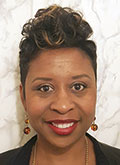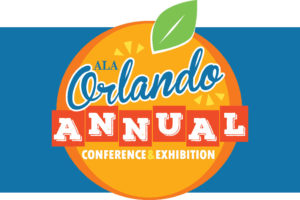
What dissertations stood out over the past year? We looked at several of them—including 10 that we highlight here—to glean useful knowledge for practitioners of library and information science.
As all doctoral candidates know, dissertations are rites of passage that facilitate a student’s transition into independent scholar, and to earn this passage, he or she must make an original contribution to the knowledge of the field. Sadly, dissertations are often overlooked as a source of information within our profession.
While the topics vary, these 10 dissertations can help inform practice in different types of libraries. And with that, we want to shine light on those scholars and the notable work they bring to the field.
The students and their topics are:
- Patricia B. Condon (Simmons College) looked at the emergence of digital curation as a field of study.
- Jeff Ginger (University of Illinois at Urbana-Champaign) examined digital literacy capability in rural libraries serving predominantly African-American and Latino communities.
- Jennifer Goulston Zwillenberg (University of Pennsylvania) advocates for access to a wide variety of genres and formats for adolescent readers, along with learning the skills of book selection.
- Alison S. Gurganus (Pepperdine University) and Stacy G. Hollins (University of Missouri–St. Louis) each addressed information needs in community colleges. Gurganus studied patron use of virtual reference, and Hollins looked at the availability of technology resources through the lens of Critical Race Theory.
- Colleen S. Harris-Keith (University of Tennessee at Chattanooga), Michele A. Leininger (University of Pittsburgh), and Sharon P. Morris (Simmons College) all discussed the development of leadership capability for public and academic library directors.
- Laury Lear (Notre Dame of Maryland University) analyzed the personality traits of young characters in three decades of Caldecott Medal winners.
- Hannah M. Rutledge (University of North Texas) discussed the information requests received by hospital libraries from patient families and hospital staff.
 Patricia B. Condon
Patricia B. Condon
“Digital Curation through the Lens of Disciplinarity: The Development of an Emerging Field”
PhD, Simmons College
Summary: Condon explores the emergence of digital curation as a possible discipline by scoping literature, content analysis, and interviews. Five key themes emerged from the data analysis. First, the terminology of the field is fairly well known, but a specific language has not coalesced. Second, collaboration among individuals and across social networks has evolved—in part from the need to partner for sustainability of projects. Third, there is evidence of multiple discipline engagement in digital curation practices. Fourth, education and training are evolving. Programs are offered through some library and information science departments. And fifth, the theme of professional and scholarly focus refers to the body of accumulated knowledge and skills related to a discipline.
Recommendations: The results show that digital curation is not yet an independent discipline but appears to be heading in that direction. Its emergence as a field of study, however, requires identifying, researching, and practicing competencies, knowledge, and skills. And for it to thrive, more programs of study need to be developed and offered in higher education, and a community of practice needs to provide it direction.
 Jeff Ginger
Jeff Ginger
PhD, University of Illinois at Urbana-Champaign
Summary: Ginger gathered data about how public libraries are providing digital literacy services and resources in rural locations and predominantly African-American and Latino communities. In many rural communities the public library is the only available public access to the internet. There are fewer opportunities for digital literacy education; race and ethnicity strongly correlate with rural poverty; and technology infrastructure and stable funding are challenges for libraries within rural communities. Although many libraries have moved from providing only internet access to now also assisting with public computing, Ginger’s results revealed that many rural libraries did not have a strong technology infrastructure and have fewer staff to devote to digital literacy programming.
Recommendations: The author had several recommendations for libraries to succeed in providing leadership toward community proficiencies in digital literacies. First, library staffers and patrons need to work together to decide what digital literacy means in their community. Second, staff members need professional development to help with digital literacies training and become proficient in developing related programming. This training should go beyond teaching librarians how to work devices and use software; instead, they need to know how to instruct and engage with patrons. To assess programming, library officials must show how a patron is changed by the programming, not merely count how many people attended or used computers. Providing resources and professional development about assessment can help empower staff members to accurately measure and improve the success of digital literacy efforts.
 Jennifer Goulston Zwillenberg
Jennifer Goulston Zwillenberg
EdD, University of Pennsylvania
Summary: Learning how to select books and having access to a wide variety of genres and formats are key ingredients in developing avid readers. The focus of this case study was on the adolescents’ view of what makes interesting reading rather than the prescriptive view of what students should read. Set in an urban school, the study participants included African-American students in the 6th grade who had varied reading identities and literacy practices. The school’s support of daily independent reading was critical to providing time for adolescents to browse, read, and talk about their interests. Goulston Zwillenberg and educators cobbled together a library of a few thousand texts from grant funds, donations (including 300 comic books), bargains from Scholastic, and purchases made from students’ wish lists.
Recommendations: An analysis of interviews, observations, discussions, and field notes revealed several implications for practice. Educators need to select texts beyond the traditional lists of recommended reading. Adolescents like familiar stories and a variety of genres and formats, including read-alouds, hybrid texts, and graphic novels. Lists such as those in the Common Core State Standards may not provide meaningful and enjoyable titles for many adolescents. Students need instruction on how to select books using more information than the cover and title. Adolescents allowed to discuss books with older adolescents (mentors) may broaden their own interests. Finally, we must talk with students about their experiences with texts and literacy in order to understand their needs and interests.
 Alison S. Gurganus
Alison S. Gurganus
EdD, Pepperdine University
This study directly compared the transcripts of IM (instant message) chat reference and log-in chat from the viewpoint of both users and librarians at a community college. Results of the study show that both IM and log-in chat are needed for differing reasons: The IM portal is most often used for simpler questions, and the log-in portal receives research-based questions. While chats tend to be less formal and shorter, a librarian must still decipher the information needed, which is sometimes camouflaged in words. Thus, it is important that the reference interview be conducted in both chat and log-in reference service. Interestingly, librarians were perceived to be 18% friendlier in log-in reference, possibly because of the longer time of the transaction. But being friendlier in IM transactions is an achievable goal.
Recommendations: Libraries have to adapt to new models of reference work. This study provides information to help make decisions about chat and log-in reference services. When selecting software, librarians need to understand the different ways that students use the technology. By understanding student needs and the attributes of reference platforms, librarians can make decisions that reflect fiscal responsibility and service improvement. Additional recommendations include being aware of the librarian’s role in the communications process. In addition to technical proficiency, a librarian must make patrons feel comfortable. Being approachable and available is necessary for successful online—as well as in person—reference service.
Colleen S. Harris-Keith
EdD, University of Tennessee at Chattanooga
Summary: Harris-Keith surveyed academic library directors about the skills used in their previous library positions to determine which positions help develop the leadership skills necessary for academic library director positions. The verdict: Prior experience as an academic librarian may not necessarily provide the skills needed for director positions.
Recommendations: One idea is to inform curricula in LIS graduate programs of the need for leadership knowledge and experience. A second recommendation is to encourage discussion among academic librarians about the needed skill sets and how to find appropriate leadership development opportunities. Professional associations could create leadership inventories to assist members in choosing professional development opportunities that address weaker skills. Additionally, these associations should integrate practice-oriented skills development into training opportunities. The profession could consider scaffolding as a way to develop competencies to better prepare for academic library leadership.
 Stacy G. Hollins
Stacy G. Hollins
“The Digital Divide through the Lens of Critical Race Theory: The Digitally Denied”
PhD, University of Missouri–St. Louis
Summary: African-American professors and African-American community college students participated in this study about the impact of the availability of technology resources and support on student success. Technological resources included access to the internet, software, hardware, technology training, technology support, and community resources. It was found that lack of access to technological resources results in missed assignments, low grades, and failed classes. Family obligations and lack of transportation often limit student access to on-campus computers and other technology. Public libraries and technology centers are also difficult to access because of lack of transportation and childcare needs.
Recommendations: Results of this study promote an awareness of those students who lack access to technology in community colleges, universities, and public libraries. This study could inform decision makers, such as policymakers and community college leadership. Libraries and computer labs must reconsider open hours and staff availability at times that would be beneficial to students who lack access or who have work or family obligations.
 Michele A. Leininger
Michele A. Leininger
“From Librarian to Proficient Manager: The Journey of Public Library Front-Line Managers”
PhD, University of Pittsburgh
Summary: This case study investigated the path public librarians took to learn how to become managers. The study also looked at how librarians interact with colleagues and organizations to become proficient. Findings include that new managers must understand—and be able to make—the transition from being a star producer to getting others to do the work. Many managers in smaller libraries serve in more than one role, i.e., they may also serve as adult and teen services librarian.
Recommendations: A clear understanding of the varied staff roles will aid the balancing act. Keeping the lines of communication open among staff members will aid the new manager in making the transition to management. Participants suggested that LIS programs include more education about human resources, interpersonal communications, guidelines for dealing with both difficult staffers and customers, and the general processes and laws surrounding disciplinary action and firing employees.
Laury Lear
“Personality Traits of Young Characters in Caldecott Medal–Winning Picture Books from Three Time Periods: 1950s, 1980s, and 2000s”
PhD, Notre Dame of Maryland University
Summary: Picture books have a great impact on children at an early age. Over the decades, studies have considered picture books in terms of equity in the portrayal of gender and ethnicity. This study examines personality of young characters in Caldecott Medal–winning picture books from the 1950s, the 1980s, and the 2000s. Lear used the big five personality traits—extroversion, agreeableness, conscientiousness, emotional stability, and openness to experience—to examine changes in the personality of characters over the decades. She found that there was little change in picture book characters pertaining to agreeableness, conscientiousness, and emotional stability. An interesting note: Emotional stability ranked very low for picture book characters over all three time periods. By contrast, extroversion and openness to experience saw increases within characters, possibly reflecting a change in our values over time.
Recommendations: Lear noted that children relate to fictional characters, and educators need to develop an understanding of the personalities of characters in picture books and how they might influence children. Children may need background information when interpreting picture books from different time periods or cultures. Educators and parents can help children by providing context, literary analysis, and discussion when reading these books. Lear suggests pre-service and in-service training in the selection and use of picture books to help children handle social problems, develop positive self-concept, and learn positive problem solving.
 Sharon P. Morris
Sharon P. Morris
“Reflecting on the Core Values and Defining Moments of Public Library Directors”
PhD, Simmons College
Summary: Morris examined the values and experiences of public library directors considered leaders in the field. Results indicate that public library directors’ values operate within five distinct contexts: intrapersonal, interpersonal, organizational, community, and societal. The values of a library director affect many people, including employees, trustees, volunteers, donors, and community leaders. Decisions made based on values may influence the broader community, including special interest groups, policymakers, and demographic groups. Sometimes difficult moments and critical incidents will arise, requiring us to examine our values.
Recommendations: Some library directors noted the lack of integrity of former directors as critical incidents that defined moments when long-held values solidified or shifted. Mismanagement of resources, personnel, and funds were identified as indicators of a lack of integrity. Maintaining integrity, some noted, included transparency of decision making and management aids. Likewise, systems of accountability help demonstrate integrity for some library directors. Sometimes being direct and honest in a difficult situation was the best choice. Recommendations include that the profession consider policy implications related to the lack of integrity, promote ethics training, and develop ethical accountability measures.
 Hannah M. Rutledge
Hannah M. Rutledge
PhD, University of North Texas
Summary: What are the information needs of patient families and hospital staff? Rutledge sought to find out. She analyzed and categorized the information requests received by the Family Resource Libraries over the span of three years. They were organized by the type of information requested, the resources used to fill those requests, the time spent on the information requests and the library in which the requests were received. While the results of hospital staff requests are most pertinent to medical libraries, the results of the patient families’ requests are also of importance to public, school, and academic libraries. The top 10 information requests were:
- nutrition, diet, exercise
- autism
- asthma
- diabetes
- school issues
- nursing research
- ADD/ADHD
- cancer
- epilepsy
- surgery
Library staff members provided extensive bookmarks on all their computers and laptops to make it as easy as possible for both patient families and hospital staff to locate reliable medical and health and wellness information. Individual instruction was also available in the library.
Recommendations: This study informs librarians about the differences in staff and family information needs in hospital libraries. Hospital staff sought primarily clinical information for the purposes of evidence-based practice and research. Patient families sought medical information they could print and take home with them. To serve staff members, the library collection must include subscription health and medical databases with full-text access to articles. Staffers still refer to books, so funds must be included in the budget accordingly. While staffers may look for specific articles, patient families ask for information about health conditions, so the library should provide articles and pamphlets using lay terminology. The internet was the most-used resource for both librarian-assisted research and unassisted research. Hospital staffers and families need online access with quality health and medical sites already bookmarked and with affordable printing options. Both staff members and families need assistance and instruction from the librarian.



 KATHY ROSA is director of ALA’s Office for Research and Statistics.
KATHY ROSA is director of ALA’s Office for Research and Statistics.

It’s great that these ETDs are highlighted, but why aren’t there links to them in their libraries’ digital repositories?
Thanks for the suggestion — we’ve added the links where available.